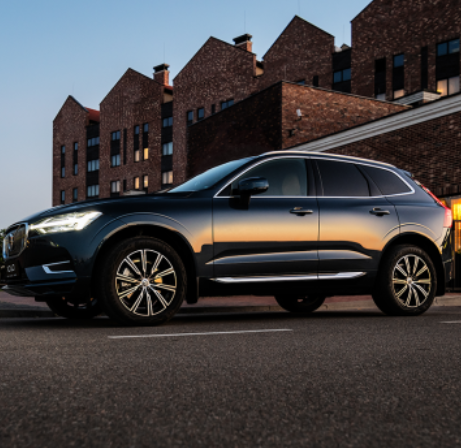The approach of developing human-centric technology that creates value and enhances safety, rather than pursuing technology for its own sake, aligns with the Volvo Car’s goal of making cars safer and improving lives without compromising safety.
Volvo’s software-defined cars are central to this mission, bringing next-generation safety, connectivity, data, and software into one product. The company follows a technology roadmap that balances in-house development with strategic partnerships, allowing it to work with speed and access the latest technologies.
The new Volvo EX90 is the first of the company’s vehicles to be fully software-defined, built on a centralised core compute architecture. This was made possible through a long-standing collaboration with NVIDIA.
The EX90’s advanced core computing system is powered by NVIDIA’s DRIVE Orin system-on-a-chip (SoC), capable of performing over 250trillions of operations per second (TOPS). This system coordinates every aspect of the car, from powering AI-based active safety and driving assistance systems to paving the way for future autonomous driving, all while delivering a superior customer experience.
Volvo Cars is expanding its collaboration with NVIDIA to further unlock the potential of its software-defined vehicles. Later this decade, the company will introduce cars built on NVIDIA DRIVE Thor, a system capable of up to 1,000 TOPS, which is four times the performance of the DRIVE Orin SoC and offers seven times greater energy efficiency.
Integrating DRIVE Thor into future models will help Volvo Cars continue to future-proof its next generation of vehicles. DRIVE Thor, featuring NVIDIA’s Blackwell GPU architecture, will enable more advanced driving assistance and safety features, support the development of autonomous driving, and introduce AI-based capabilities and in-car experiences.
Jim Rowan, CEO of Volvo Cars, stated: “With NVIDIA DRIVE Thor in our future cars, our in-house developed software becomesmore scalable across our product line-up, which will help us to continue to improve the safety in our cars, deliver best-in-class customer experiences, reduce our costs, andincrease our margins.”
To further explore the potential of AI, Volvo Cars, through its fully owned software company Zenseact, is utilising NVIDIA DGX systems. These AI supercomputing platforms are optimised for large-scale workloads and will support the development of safe autonomous driving.
The NVIDIA DGX systems will be used for AI model training before deployment to future vehicle fleets. By harnessing the power of the NVIDIA DGX platform – with its purpose-built AI infrastructure and optimised software stack – Volvo aims to improve the efficiency of training current and future AI models.
The company’s long-standing collaboration with NVIDIA and its use of the NVIDIA DRIVE platform have enabled it to deepen its understanding of safety. This collaboration allows Volvo to train large AI models that help its cars better understand their surroundings, all with the aim of improving safety and convenience and advancing autonomous driving capabilities.
Anders Bell, a senior executive at Volvo Cars, commented: “The NVIDIA DGX AI supercomputer will supercharge our AI training capabilities, making this in-house AI training data centre one of the largest in the Nordics. By leveraging NVIDIA technology and setting up the data centre, we can pave a quick path to high-performing AI, ultimately helping make our products safer and better.”
Original article source:
FAQ
- What are the main goals of Volvo Cars’ expanded collaboration with NVIDIA?
– The main goals include enhancing Volvo’s in-car technologies with NVIDIA’s advanced computing platforms and AI capabilities. This collaboration aims to drive innovations in autonomous driving, improve safety features, and provide a more advanced and intuitive user experience. NVIDIA’s technology will support Volvo’s vision of future mobility and help accelerate the development of their next-generation vehicles.
- How will NVIDIA’s technology benefit Volvo’s vehicles?
– NVIDIA’s technology will provide Volvo with high-performance computing and AI capabilities necessary for advanced driver assistance systems (ADAS) and autonomous driving features. This includes leveraging NVIDIA’s DRIVE platform for AI-driven decision-making, real-time data processing, and improved vehicle safety. Additionally, it will enhance in-car infotainment systems and support over-the-air (OTA) updates for continuous improvements.
- What are the specific technologies or platforms involved in this collaboration?
– The collaboration will involve NVIDIA’s DRIVE platform, which includes hardware like the NVIDIA DRIVE Orin and software such as the DRIVE Hyperion stack. This platform is designed for autonomous driving and advanced safety features. Volvo will integrate these technologies into their vehicles to enhance computing power and AI-driven functionalities, providing a more robust foundation for their autonomous driving and connected vehicle strategies.
